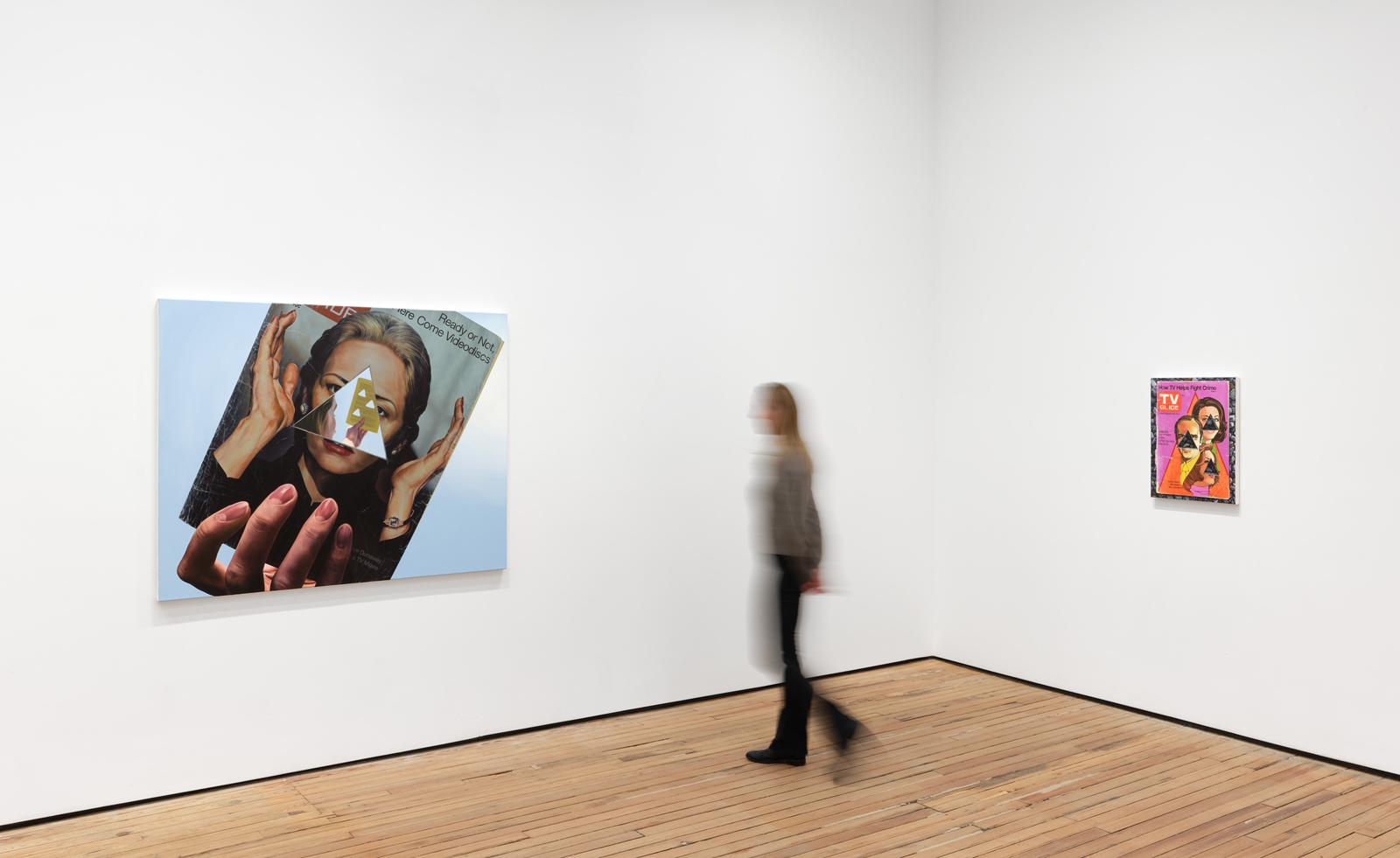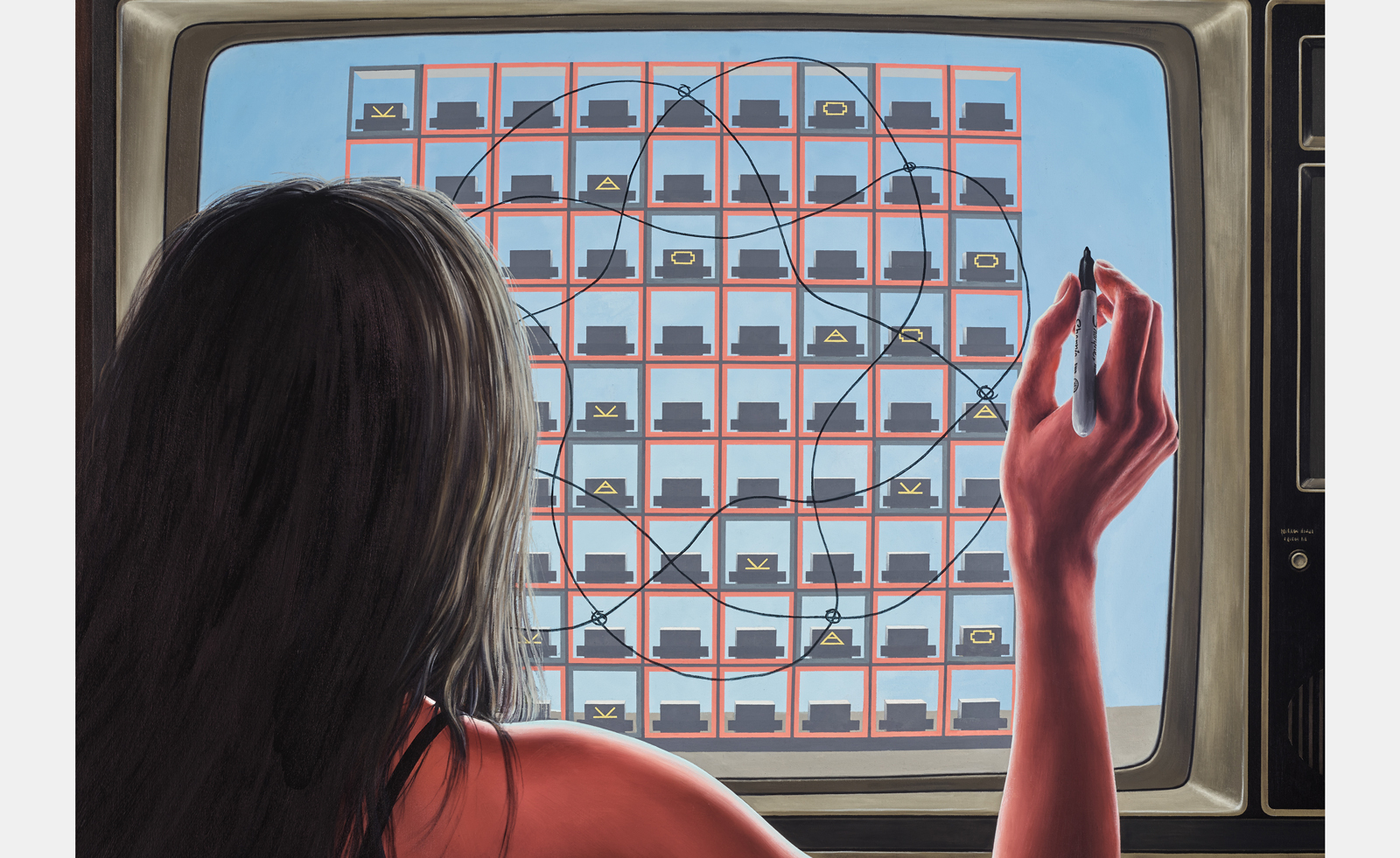
‘The Woman’ is searching for meaning in the TV Guide. For her, the television is the nirvana, and the TV Guide the map. By scrutinising its pictures, its schedules and its games, she becomes obsessed, creating rituals in its destruction while addicted to its potential for transcendence.
Or so it goes in the world of artist Eric White, who follows the journey of The Woman in his exhibition ‘Local Programming’ at New York’s Grimm gallery. In his paintings, a romanticised and glamorous American dream is given a dystopian twist, with the seemingly innocuous world of entertainment infecting its followers with xenophobia, isolation and misogyny.
Eric White, ‘Local Programming’ at Grimm, New York
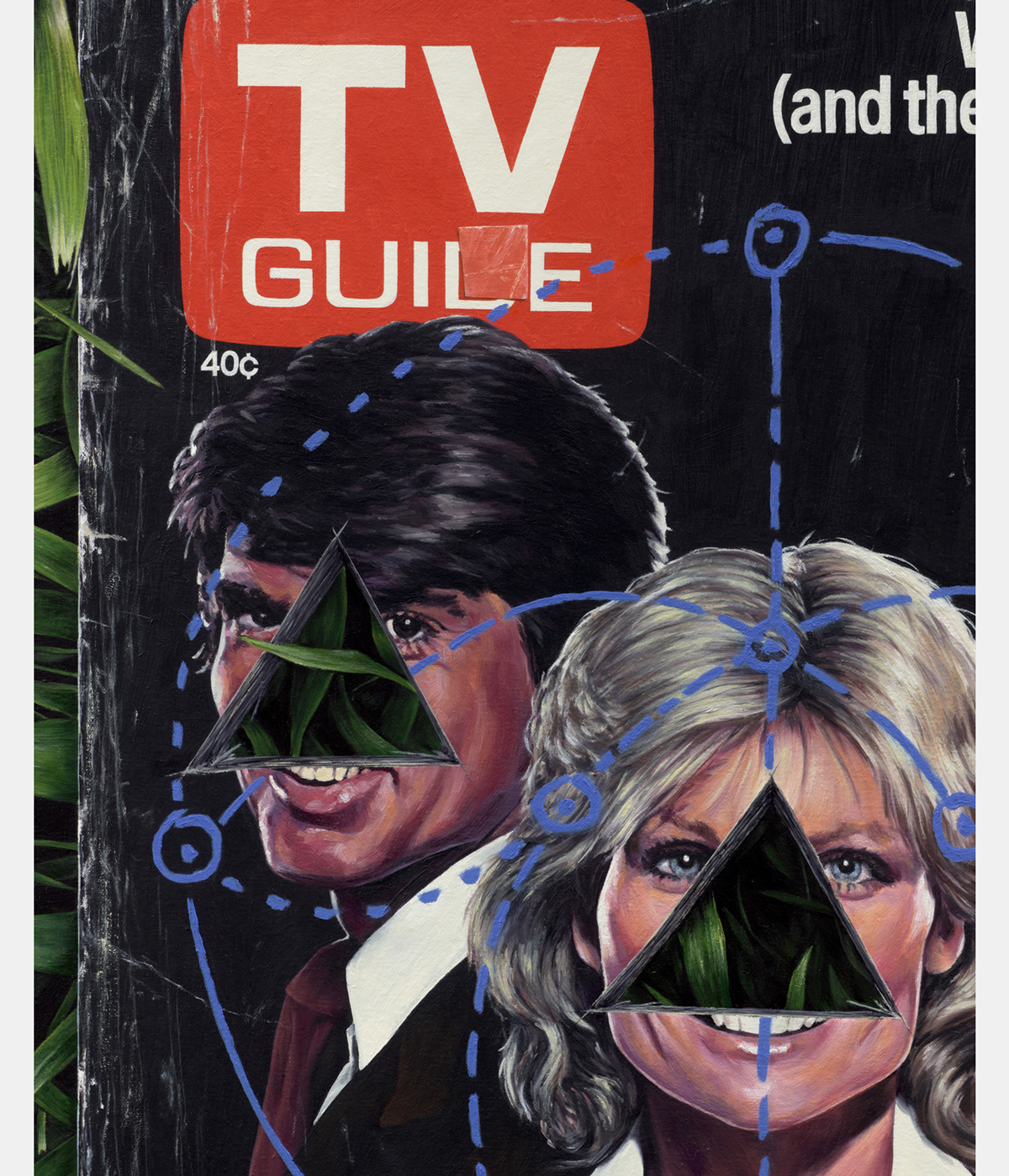
White bases his narrative in the 1970s, a time when there were only three major networks and the TV Guide was one of the most-read magazines in the US. ‘It’s now hard to imagine anything being so singular and ubiquitous,’ he says. ‘For seven days, each issue was absolutely indispensable in the American home, and then suddenly completely worthless when the week was up. I’m definitely nostalgic for the simplicity and even the naivety of that time. Although it was still in its larval stages, as we all know, electronic media was soon to become an all-encompassing and inescapable force which we allow to narrow our imaginations, encourage our compulsive consumption, and fill our minds with self-doubt and paranoia. Something initially intended to be of great service to the public ultimately became a tool for corporate manipulation and dominance of society.’
The artist draws on ideas from philosophers Neil Postman and Marshall McLuhan in his subsequent reflections on the autonomy of being entertained, considering the divinity we impose on our technology and its creators. White also cites an extract from a Jack Kerouac passage – ‘was transmitted to me under a pine tree in North Carolina on a cold winter moonlit night’ – which triggered the idea of creating the world of a game show.
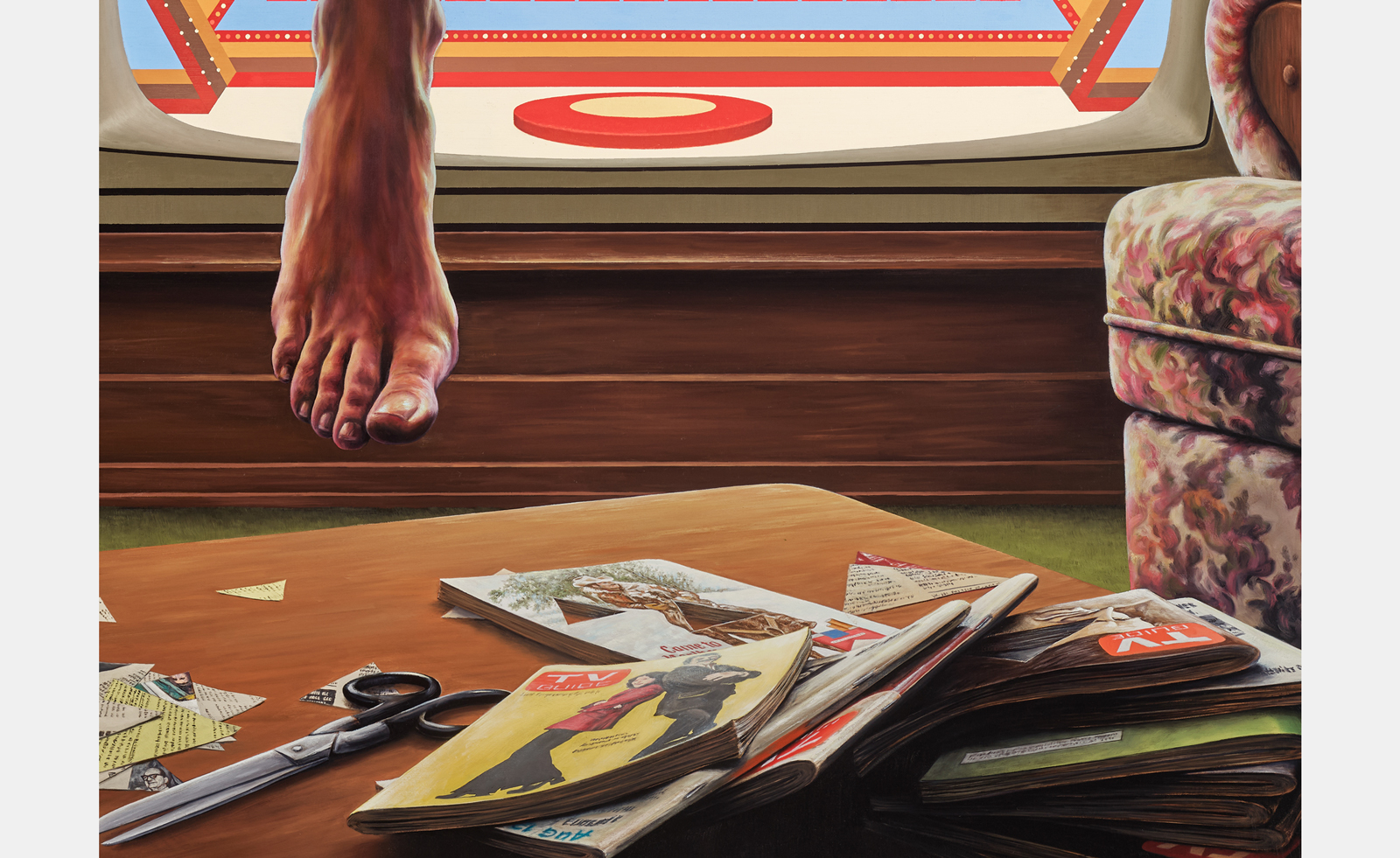
White continues, ‘I then began to think of it from the perspective of a viewer, and a female character – who maybe simultaneously experiencing a spiritual awakening and a psychotic break – began to materialise. I started conceptualising the idea of impossibly exaggerated and oversized game-show boards, and the first one to strike me was Wheel of Fortune. The idea that this massive paragraph of transcendental text is the puzzle on an episode of an incredibly popular game show is hilarious to me. It’s also a pretty obnoxious thing to do in a painting, because the viewer is forced to either simply walk away, or to stand there and read the entire thing, which is difficult, because I’ve removed the [letter] “a”s and “e”s. John Baldessari once said, “I think the artist should make things difficult for the viewer.” So I’m just trying to do my part.’
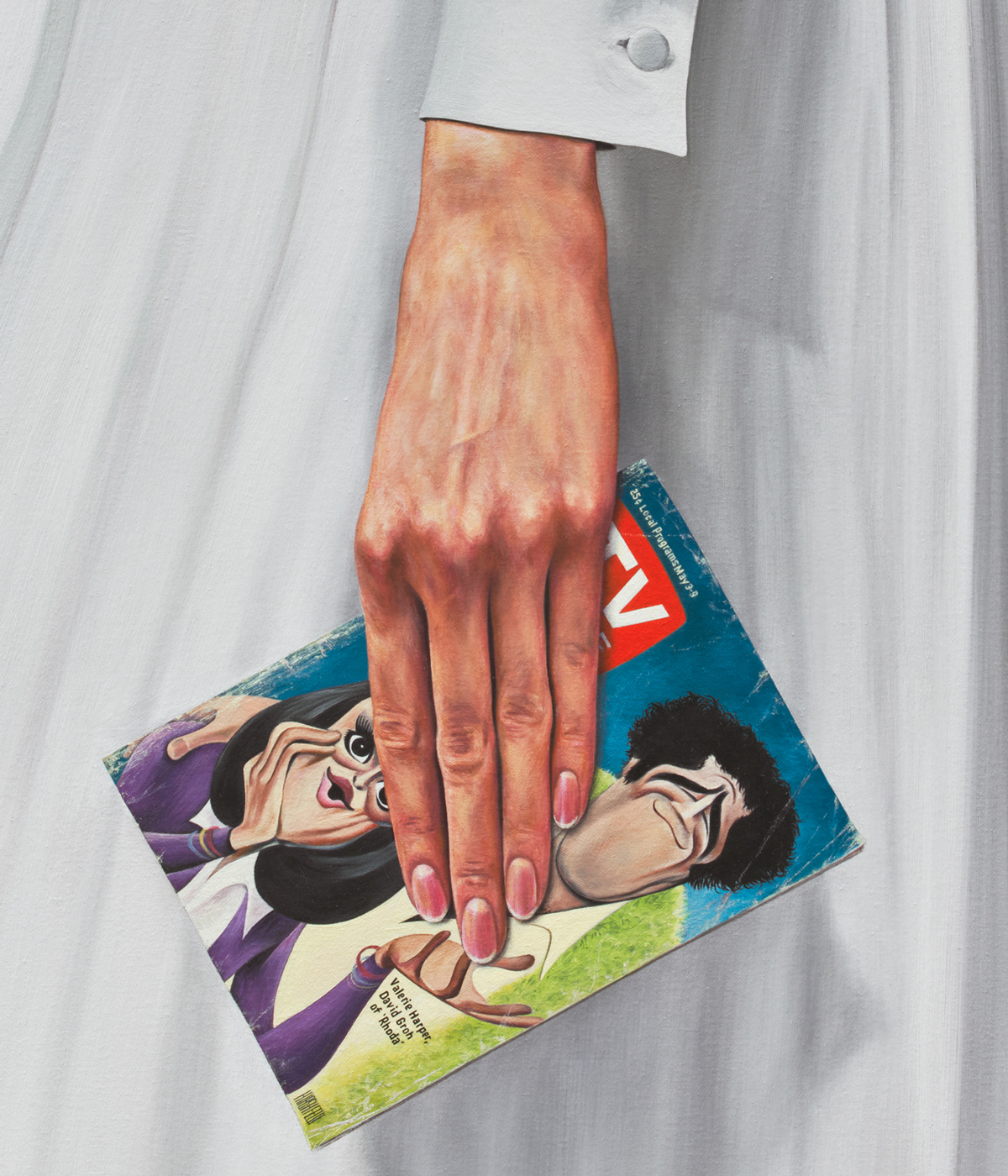
The works encourage this discomfort, inviting the viewer into the frame and building on our innate voyeurism – how far into this woman’s very private madness are we willing to go? By juxtaposing realistic worlds encompassing recognisably suburban tones and architecture against surreal proportions, we feel at home but also uneasy.
‘I think the realism grounds something ethereal and incongruous, especially with respect to the three larger works, which take place inside 1970s-era suburban American homes, with massive televisions dead centre in the compositions. The rooms are rendered realistically, but are basically architecturally and spatially impossible, and they become these strange claustrophobic spaces for this anonymous character to exist in. She is on a desperate search for meaning in a culture overwhelmed by a perpetual stream of disposable commercialised “content”, and I think the overly crowded and chaotic spaces amplify and align with that idea. And the way the finessed rendered elements contrast with the precise geometric graphic forms of the game-show boards on the TVs sets up a sort of visual and conceptual tension, and adds a layer of complexity to the paintings.’
'Local Programming' is on at Grimm New York until 30 March 2024
